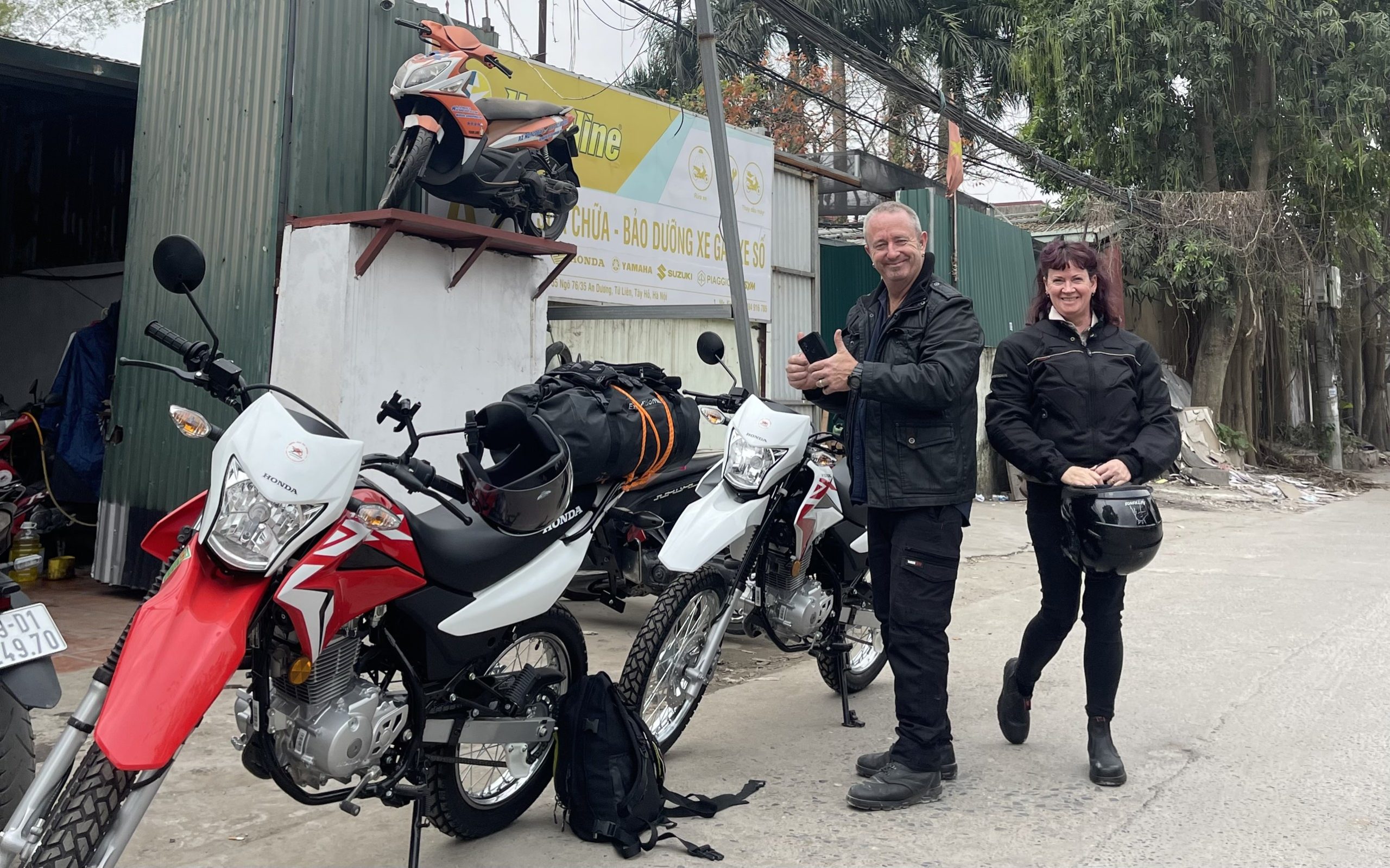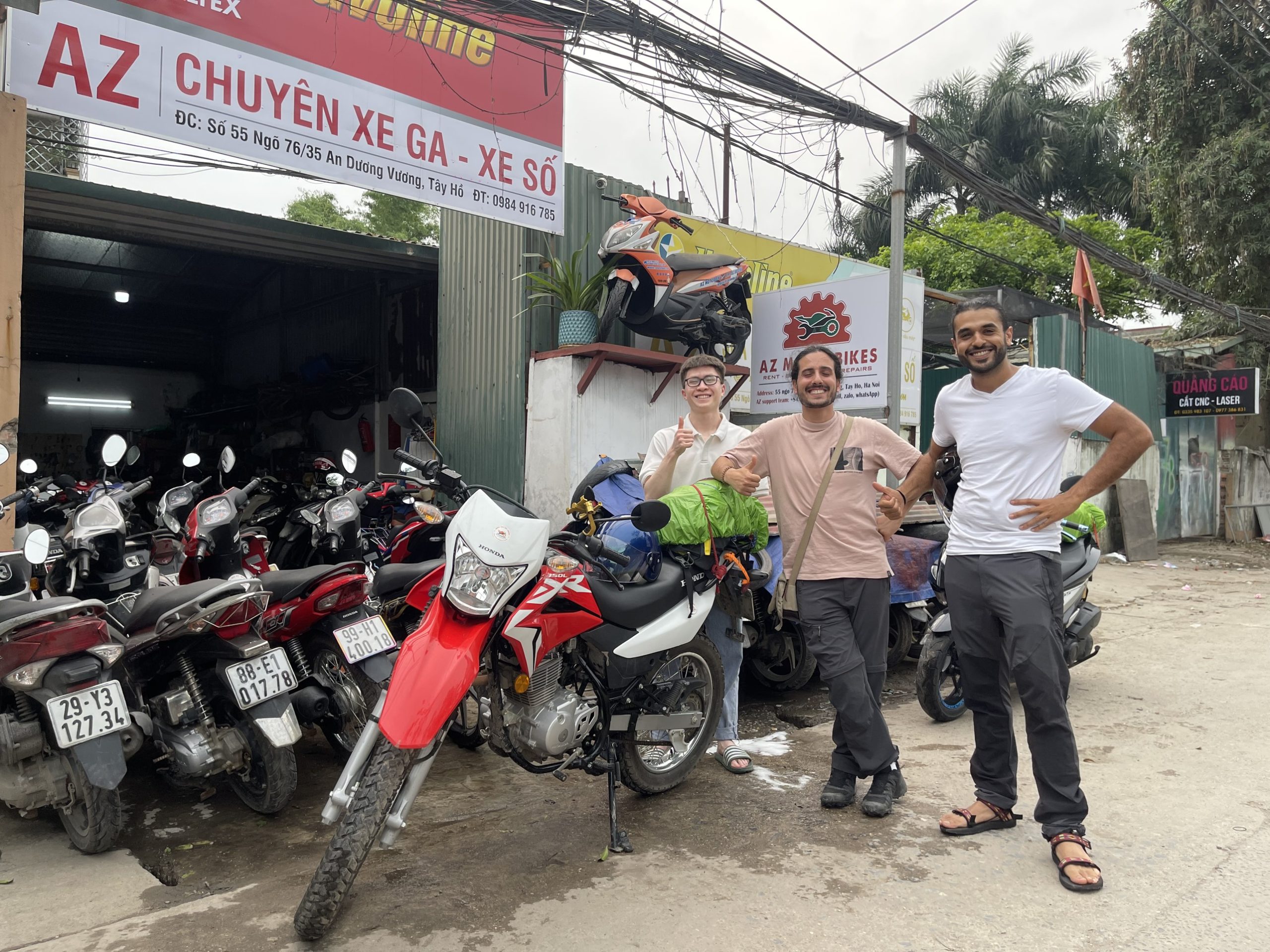Chưa có sản phẩm trong giỏ hàng.
12 Steps to Buying a Motorbike in Vietnam: A Comprehensive Guide
17.04.2023 by AZ Motorbikes
ARTICLE CONTENT
If you’re planning to purchase a motorbike in Vietnam, follow these useful tips to ensure a smooth process. At AZ Motorbikes, we have a wide selection of quality bikes available for sale.

Step 1: Obtain all the necessary licenses and documentation required to ride legally in Vietnam. This includes a valid Vietnam motorcycle license, ownership papers for the bike you’re purchasing, and insurance, which you can obtain inexpensively from the same agent who issued your license.
Step 2: Check online on platforms like Craigslist or Travelswop for available bikes. You can also find information on the most common bikes available in Vietnam.
Step 3: Look for bikes from a roadside mechanic, but keep in mind that they may add their commission on the price. Buying from a second-hand bike dealer doesn’t guarantee anything either. Thoroughly inspect the bike before making any purchase, even if the seller appears trustworthy. Not all bike traders in Saigon and Hanoi are honest, so it’s best to choose those with a good online reputation to avoid buying the wrong bike.
Step 4: Know your budget, and don’t spend more than $300 US dollars on a second-hand bike as it is generally overpriced unless it’s new. Bikes in the 50 to 125cc range are suitable, as larger capacity bikes require an appropriate Vietnamese motorbike license and may draw unwanted attention from the police.

Step 5: Inspect the bike carefully. Is it clean? Does anything appear to be hanging off? Keep in mind that paint jobs vary from clean to Hammerite with a brush, but will you be able to resell it? If it appears to have been through the wars, then the next potential owner will spot that too and probably walk away or offer a low price.
Step 6: Check the frame for any signs of damage or suspicious-looking welding. A small amount of surface rust is acceptable, but check any areas of rust that look like they have been painted over with a pen or similar prodding device. If the pen goes through anywhere, then walk away.
Step 7: Inspect the tires for tread and inflation. Check on the sides of the tire for any cracks or missing bits.
Step 8: Verify the electronics, including the front and back lights (dipped and main beam), indicators, horn, and starter motor (if fitted).

Step 9: Investigate the suspension and make sure the electronics work.
Step 10: Test ride the bike and check if all the gears work smoothly. Do the brakes work? Any strange noises? Is the acceleration smooth and progressive? Does the bike cruise ok on a constant throttle? Make sure the lights, indicators, and horn are still working. Check the rubbers for any movement while grabbing the wheel at each side when checking bearings and alternately trying to rock it (pull with one hand and push with the other) for both front and back wheels.
Step 11: Most minor issues can be fixed inexpensively by most mechanics. However, if the bike is falling apart, it’s best to walk away. If you encounter any minor issues, inform the seller politely and factor them into your offer price.

Step 12: It’s important to make sure you get all the necessary paperwork with the bike. In Vietnam, you don’t need to transfer the bike into your name like in the UK. However, you should receive a blue ownership card (usually laminated) that matches the details of the bike when you hand over the cash. Make sure to ask for it beforehand and keep it with you at all times when riding your bike. This card is crucial because if you don’t have it and get stopped by the police or are involved in an incident, you may have to pay a hefty bribe or risk having your bike confiscated. Don’t accept anything else that looks different, even if the seller claims it’s an “old type of paper.” Hope these tips help you make a smart choice and have a great trip!
Contact us:
Facebook: https://www.facebook.com/AZmotorbikeservice
WhatsApp; iMessage; Zalo using +84.984.916.785
Website: azmotorbikes.com
Phone: +84.984.916.785
Email: manhkien.mba@gmail.com
